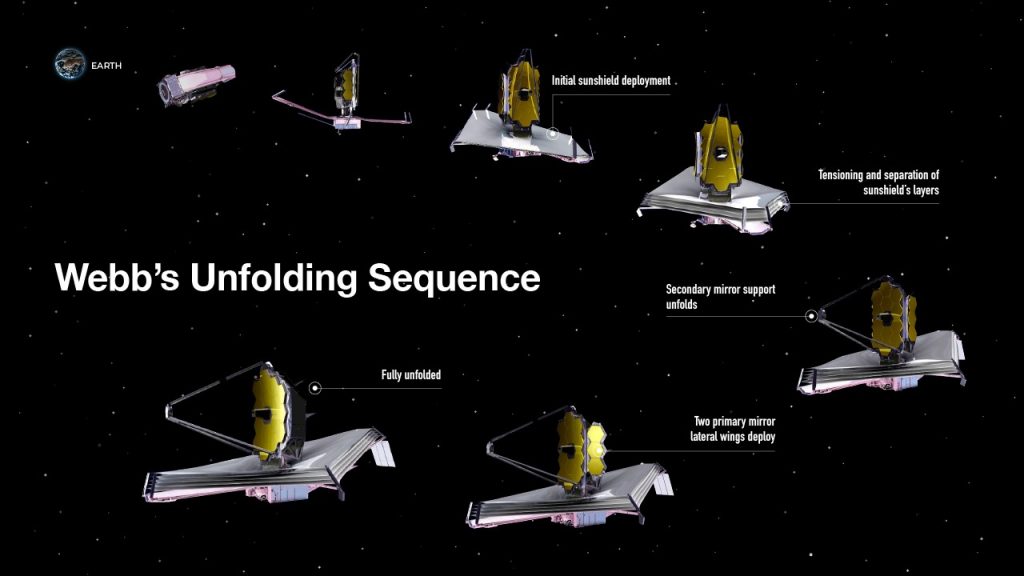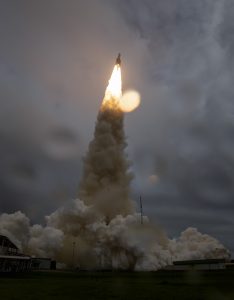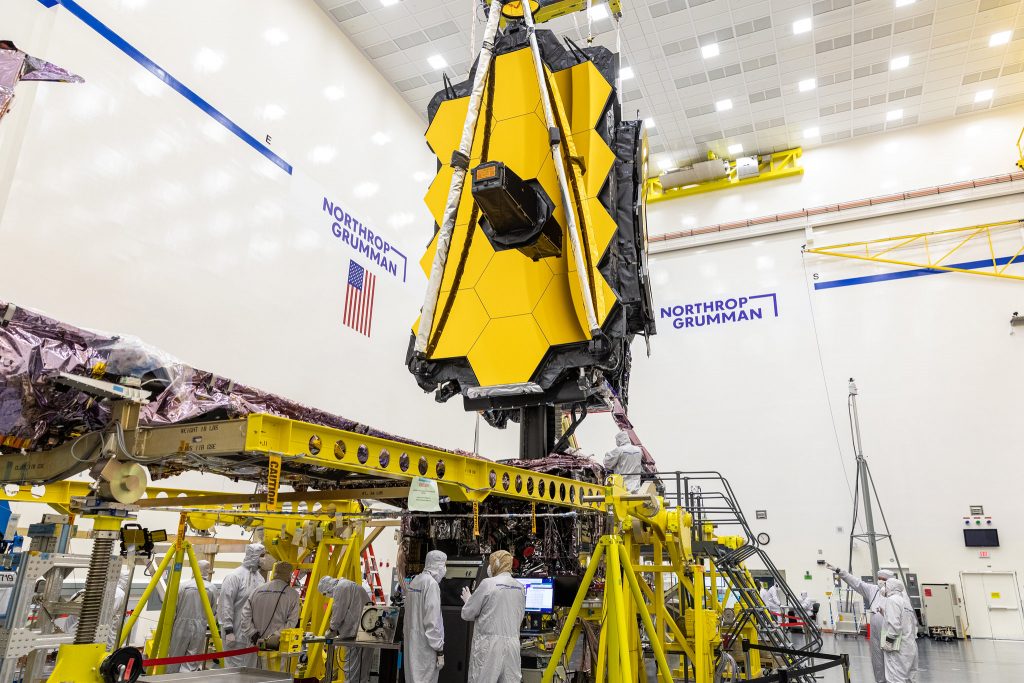With the successful extension of Webb’s second sunshield mid-boom, the observatory has passed another critical deployment milestone. Webb’s sunshield now resembles its full, kite-shaped form in space.
Engineers began to deploy the second (starboard) mid-boom at 6:31 p.m. EST and completed the process at about 10:13 p.m. EST.
The completion of the sunshield cover and mid-boom deployments over the past two days marks a critical milestone for Webb: all 107 membrane release devices associated with the sunshield deployment — every single one of which had to work in order for the sunshield to deploy — have now successfully released. Webb has 178 of these ‘non-explosive actuators’ in all; 107 were used to keep the sunshield safe and folded prior to deployment.
As the mid-booms slowly pushed out horizontally from the spacecraft, each driven by a motor, they pulled the folded membranes of the sunshield with them. This extended the sunshield to its full 47-foot width all the way across the observatory.
“The mid-booms are the sunshield’s workhorse and do the heavy lifting to unfold and pull the membranes into that now-iconic shape,” said Keith Parrish, Webb observatory manager at NASA’s Goddard Space Flight Center.
While the deployments took longer than expected today, that was due to the operations team moving forward with caution and according to the protocols they laid out for dealing with unpredictable situations.
“Today is an example of why we continue to say that we don’t think our deployment schedule might change, but that we expect it to change,” Parrish said. “The team did what we had rehearsed for this kind of situation – stop, assess, and move forward methodically with a plan. We still have a long way to go with this whole deployment process.”
The two mid-boom arms are now locked in their final position. They will hold the sunshield membranes in their proper place, as the team turns to the final stage in the sunshield’s deployment: tensioning.
In the coming days, the team will separate and then individually tension each of the five sunshield layers, stretching them into their final, taut shape. This will create space between the membranes to allow heat to radiate out, making each successive layer of the sunshield cooler than the one below.
Webb’s engineers will begin with the bottom layer – the largest and flattest layer, which is closest to the Sun and will reach the highest temperatures. They will proceed sequentially to the fifth and smallest layer, closest to the primary mirror. Tensioning the layers involves sending commands to activate several motors to reel in a total of 90 cables through numerous pulleys and cable management devices. Sunshield tensioning will take at least two days but may take longer, due to the complexity of the process and the flexibility built into the timeline.



